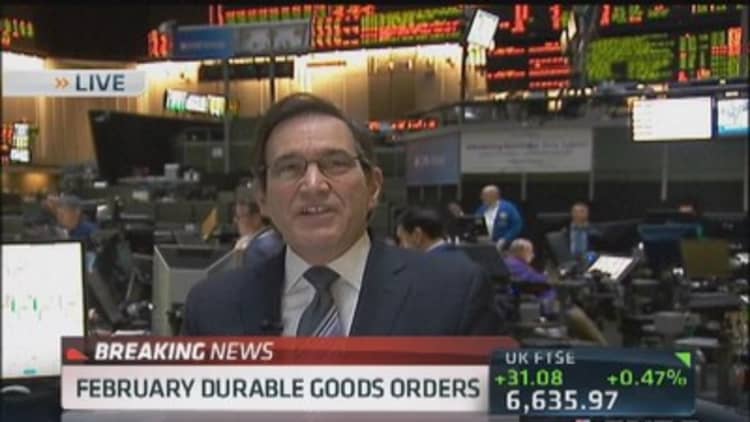The number of Americans filing new claims for unemployment benefits increased more than expected last week, but the rise probably does not suggest a shift in labor market conditions as the underlying trend continued to point to strength.
Separately, Orders for long-lasting U.S. manufactured goods rose more than expected in March and a measure of business capital spending plans surged, bolstering views of an acceleration in growth in the second quarter.
Initial claims for state unemployment benefits rose 24,000 to a seasonally adjusted 329,000 for the week ended April 19, the Labor Department said on Thursday. Claims for the week ended April 12 were revised to show 1,000 more applications received than previously reported.
Economists polled by Reuters had forecast first-time applications for jobless benefits rising to 310,000. The increase probably reflects difficulties adjusting the data for seasonal fluctuations given a late Easter this year and the timing of school spring breaks.
The four-week moving average for new claims, considered a better measure of underlying labor market conditions as it irons out week-to-week volatility, rose only 4,750 to 316,750. That was not too far from pre-recession levels. A Labor Department analyst said no states were estimated and there were no special factors influencing the state level data.
The claims report showed the number of people still receiving benefits after an initial week of aid fell 61,000 to 2.68 million in the week ended April 12, the lowest level since December 2007. The so-called continuing claims covered the household survey week from which the unemployment rate is calculated.
Continuing claims fell between the March and April survey periods, a good omen for the jobless rate. The unemployment rate was at 6.7 percent in March.
Durables log surprise jump

In a separate report, the Commerce Department said durable goods orders increased 2.6 percent as demand rose across all categories. Durable goods range from toasters to aircraft and are meant to last three years.
Orders advanced 2.1 percent in February instead of the previously reported 2.2 percent increase. Economists polled by Reuters had forecast orders rising 2.0 percent last month. The report fit in with other data such as industrial production, retail sales and employment, that have suggested the economy gained steam after a troubled first quarter.
Growth in the first three months of the year is forecast to have braked sharply, because of an abnormally cold winter and an inventory overhang from last year that forced businesses to place fewer orders for goods with manufacturers. The end of long-term unemployment benefits and cuts to food stamps have also robbed the economy of momentum.
First-quarter gross domestic product growth is estimated around a 1.5 percent annual rate. The economy grew at a 2.6 percent rate in the fourth quarter.
The durable goods report showed non-defense capital goods orders excluding aircraft, a closely watched proxy for business spending plans, increased 2.2 percent in March after falling by a revised 1.1 percent the prior month.
Economists had expected orders for these so-called core capital goods to increase 1.5 percent last month after a previously reported 1.4 percent decline in February.
Core capital goods shipments rose 1.0 percent last month. Shipments of core capital goods are used to calculate equipment spending in the government's GDP measurement. They had increased 0.7 percent in February.
Last month, orders for transportation equipment increased 4.0 percent. That reflected a surge in civilian aircraft orders after Boeing orders more than doubled in March to 163.
Orders for motor vehicles rose 0.4 percent after gaining 4.3 percent the prior month. Orders excluding transportation increased 2.0 percent, the largest rise since January last year.
There were gains in orders for machinery, fabricated metal products and electrical equipment, appliances and components. Orders for computers and electronic products recorded their largest increase since November 2010.
—By Reuters

